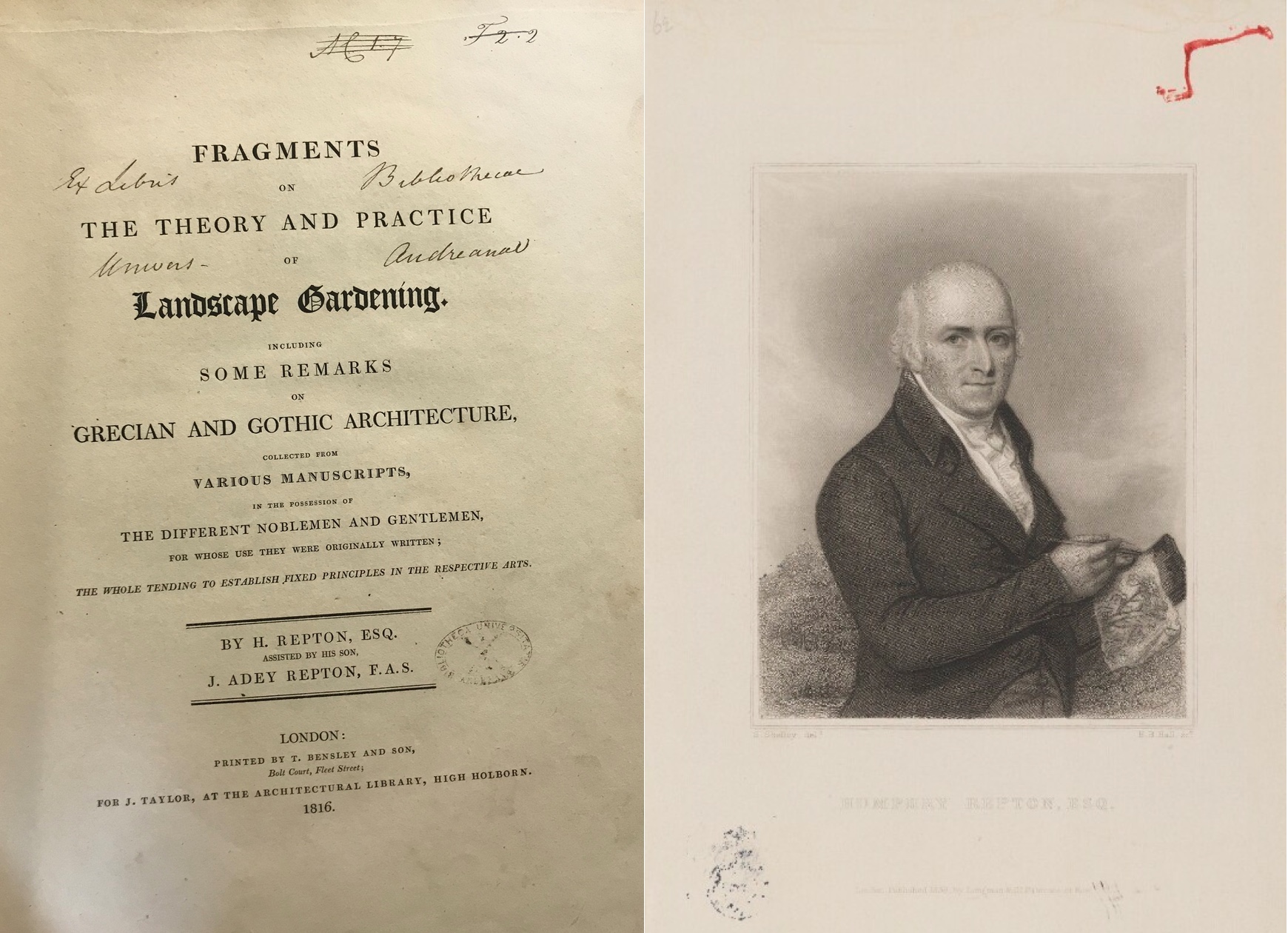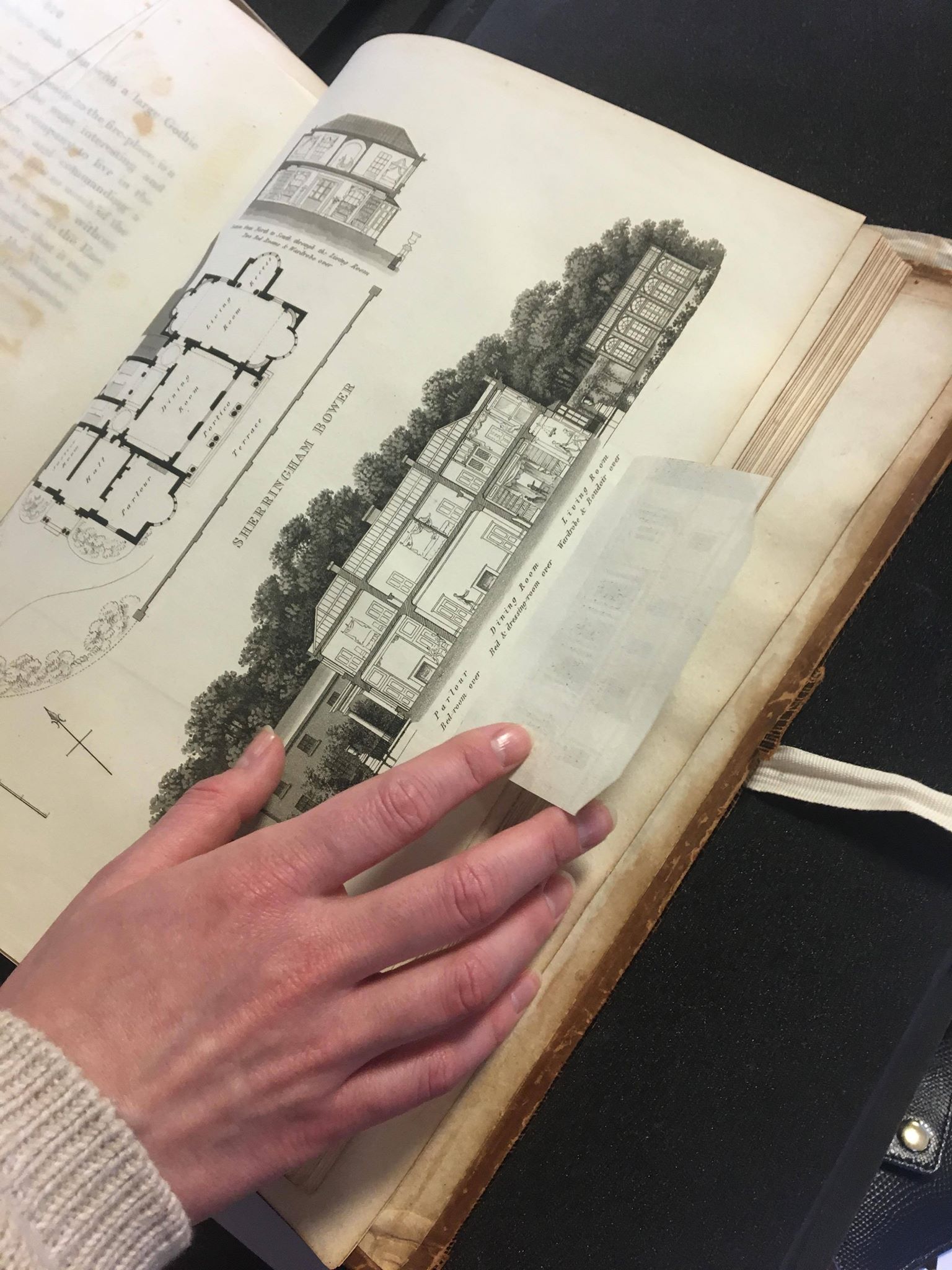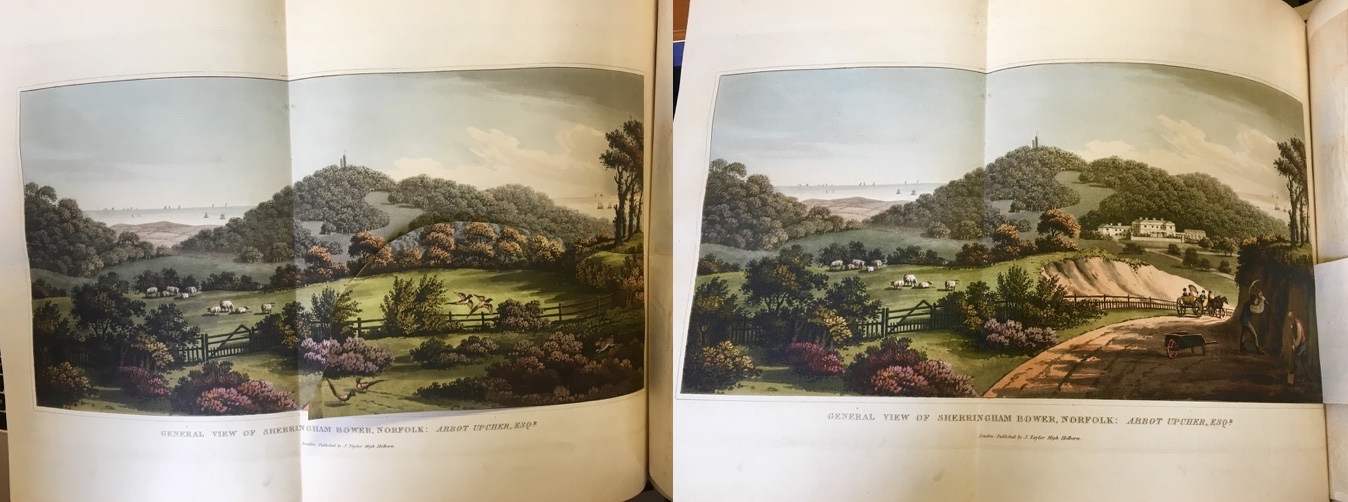Humphry Repton (1752-1818) was an English landscape gardener, who has come to be considered the successor of Lancelot “Capability” Brown. His final published work, Fragments on the Theory and Practice of Landscape Gardening, compiles key methodologies and styles that Repton used throughout his career. The book contains forty-one whole page plates, some hand-colored and some with flaps to demonstrate the projected before and after effects of his gardening projects. There are also smaller illustrations scattered throughout the text including several wood engravings.

In Repton’s plate “Sherringham Bower,” he attempts to give as complete an image as possible of the house, by providing three different viewpoints. He includes a naturalistic representation of the façade, a schematic floor plan and a cross-section viewed from the North. These three images allow the viewer to mentally construct the house and thus aid in the portrayal of three-dimensionality. Additionally, as is common in Repton’s illustrations in his published works, he has included a flap-overlay element to this plate. There is a small flap on the façade image that lowers to reveal the interior of the house. This, along with the interior view through the cross-section, adds a greater sense of depth and substance to the viewer’s psychological construction of the house. By showing the wall partitions, bookcases and even a few figures, Repton neutralizes the void that would otherwise psychologically be within the building.

In Repton’s depiction of the “General View of Sherringham Bower, Norfolk,” he employs the overlay in order to convey the passing of time between the proposed stages of the landscape and architectural developments. The single overlay in this image is found in the bottom right corner which, when lifted, reveals the intended plans for the property. Demonstrating the fluid and complementary changes to the landscape that Repton will create, the image seemingly depicts the culmination of his architectural and landscape preferences within this one scene. Repton’s preferences range from the specific upkeep of the grasslands to the emphasis placed on the road design leading into the property. A key aspect that rings true in all of Repton’s landscape designs, and that is especially well illustrated in his plans for the Sherringham Bower, is the importance placed on the location of the Estate. This ranges from the location of the land itself in relation to the surrounding areas, as well as the location of the house within the property itself.

In concluding the book, Repton uses a more personal image titled “View from my own cottage, in Essex.” This image depicts Repton’s home of thirty years. The colored print offers a before and after image of Repton’s property. Repton’s strategic flap-overlay transforms the mundane British town into a lush private garden. The image demonstrates many of the same topics discussed throughout the text, including his chapters on fences, the picturesque, appropriation and more. Repton writes, “the delight I have taken in Landscapes and Gardens, without any reference to their Quantity of Appropriation... whether they were Palaces, Villas, or Cottages… has been the chief source of that large portion of happiness which I have enjoyed through life.” Repton was more than a landscape gardener, he was an artist. As displayed in the above images, Repton utilizes the power of the flap-overlay to demonstrate third-dimensionality on an otherwise flat surface.

Elizabeth Jackson, Alegria Spencer, Elizabeth Franco
